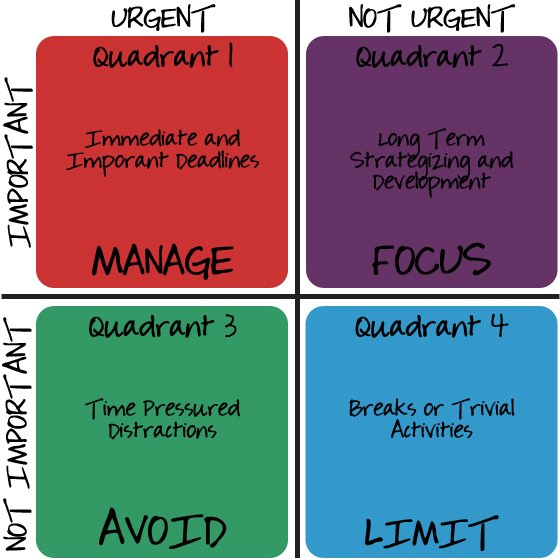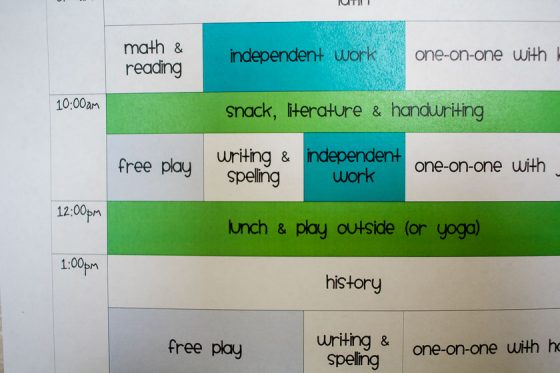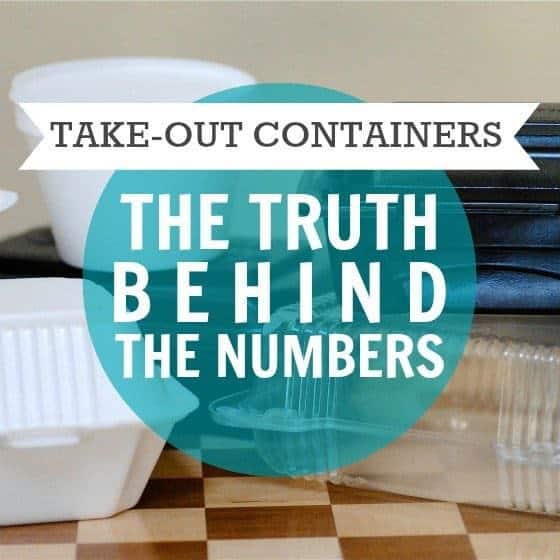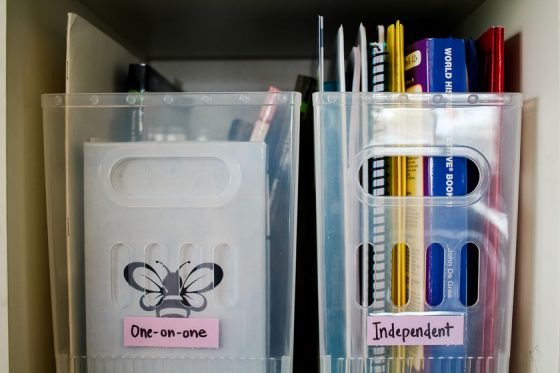While this post is geared towards scheduling for homeschoolers, don’t click away if you don’t homeschool! These tips are useful for anyone wanting to improve their time management skills.
If you’ve been homeschooling for any length of time, you’ve probably heard that “Everyone wants to quit in November and February.” While Susan Wise Bauer may have quipped this during a live seminar, her blog actually says, “My mother [Jessie Wise] always says that everyone wants to quit home schooling in November, February, and May.”
However you slice it, the point is that homeschooling is no picnic, and there are times and seasons when you probably want to quit. With several weeks of homeschooling under your belt, but several more looming ahead before any break, you may feel like you are floating in the doldrums of the ocean with no life boat in sight for an emergency rescue.
A post at Simple Homeschool outlines 5 ways to get through these doldrums.
- Take good care of yourself and your kids.
- Take a break if you need to.
- Hit the road.
- Mix it [the curriculum] up.
- Know you’re not alone.
While these are excellent suggestions, sometimes these aren’t enough or aren’t possible. If this is the case in your home-school, keep reading for a sixth option: “Simplifying the Schedule.”
Prioritize

As with normal life, too much to do can quickly lead to burn out. Take a hard look at all of your day’s “requirements” and recognize that many of these “needs” are actually “wants.”
If you’ve never heard of the “Covey Quadrant” (above), it’s time to start prioritizing your life according to importance and urgency. This will help you to discover what is really necessary. As you move through using the Quadrant in your life, you’ll want to focus on Quadrant 2 — this is where you get the most bang for your buck — focusing on the most important items, but in ways that avoid burn out (because of the lack of urgency).
Reduce Workload
Consult your state’s homeschooling laws and pare back your work to the bare minimum for a time — whether that’s a day, a week, or a month — whatever helps you rejuvenate enough to add more work slowly back in.
Slow Down
You can also change items from daily to once or twice a week. For example, Texas has some of the most liberal homeschool requirements, but one subject that is required is spelling. But who says you have to do spelling every day? Sure, spacing the lessons out and taking your time spreads the work out over a longer period of time, but slowing down is often preferable to quitting altogether.
White Space

You’ve probably heard of white space or margin before. It’s the idea of giving your schedule some breathing room. In the case of homeschooling, this usually means dropping that 15-minute-increment, back-to-back-subject schedule.
Okay, you probably threw that impossible schedule out after the first week, but if you don’t have a schedule at all, it can be difficult to accomplish everything that your state requires or that you desire to accomplish in your home-school. Resurrect the schedule, but this time, add in some white space.
Breaks
In a home-school, white space usually starts with breaks. Everyone needs breaks — you and your children — so build them into the schedule! And not wimpy 5 or 10 minute breaks (you know you can take those anytime), but add in 30 minutes or more “free time” at strategic intervals to give everyone a mental break. Go outside for a walk, do some yoga, read, or just let your kids play.
Underschedule
Another way to add white space is to under-schedule. This is what doctor’s and dentist’s offices should do! This means, however long you think a task is going to take, double it, or at least 1.5x it. For example, if the science reading should take 15 minutes, put it on the schedule for 30. If doing a science experiment should take 30 minutes, give it an hour. This way, if your child finishes “on time,” they get some free time! If they take longer, well, you’ve just allowed for a bit of “daydreaming” or “dawdling” time in the schedule, so aggravation over feeling hurried or rushed is reduced.
Categorize

As homeschooling parents, we have a lot on our plates — from meals, to children, to schoolwork, to extra-curricular activities. But, did you know that our brains can only hold on average 5 to 9 objects in our working memory? That means, it’s time to think in terms of broad categories for the schedule.
Try organizing all school subjects into these three categories: One-on-one, Independent, and All-Together. Now, if you only have one child, or your children are spaced further apart in age, you may only be able to use the first two categories; that’s okay.
If you aren’t a homeschooler, find three other categories in which to separate your time. For example, if you are a stay-at-home mom to an infant, you might have categories like Sleep, Play, and Eat. Items that can’t be done with a babe-in-arms would fall under the Sleep category; Play would involve supervision interspersed with help, while Eat is going to need your full-undivided attention.
Since working one-on-one with your child takes the most time and mental energy (and time away from other children and household needs) you’ll want to maximize the number of subjects in the Independent and All-Together categories. Here is an example:
- All-Together
- Literature, History, Science, and Art
- One-on-one
- Language Arts (reading instruction, writing, grammar, spelling)
- Independent
- Math, Logic, independent reading, additional work for older students that piggybacks off of All-Together or One-on-One subjects
This scheduling method still allows for fluidity. Younger children will need more “subjects” in the one-on-one area, but usually require less teaching time than older students. A subject that is All-Together may have some children drop-off to complete more tailored work. For example, after listening to a history lesson, younger children may do a craft, while an older child might answer some reading comprehension questions, while an even older child may have additional reading or writing assignments for the history lesson.
Thinking in terms of broad categories in scheduling also makes it easier when the schedule gets “thrown off” for one reason or another. Rearranging or rescheduling only 3 categories is easier than 7 subjects or tasks.
Scheduling
Everything on the Schedule
There’s more to your day than homeschooling subjects, so take these into account. Days with recurring weekly activities obviously have to make their way into the schedule: like your morning gym time or afternoon soccer practice.
Don’t forget to schedule “personal time,” too. Whether you need time in your schedule for a morning jog or a cup of afternoon tea sans children, it’s much more likely to happen when you put it on the schedule.
Stagger Categories
Obviously, while everyone is doing something All-Together, everyone is doing it all-together, but independent and one-on-one time need to be staggered. While you give personal attention to one child, your other children can work on something independently (this includes more “play time” for the little ones).
Signposts
Have times during the day when everyone gets back on schedule together. Easy and obvious signposts are meals and All-Together work. Every couple of hours (or so), bring everyone back into alignment with a signpost activity.
Eating your Frog
A lot of time management advice encourages “eating your frog” first thing in the morning. In homeschooling, this would mean doing the least desirable subject(s) first thing in the day. This is certainly one way to tackle your schedule. However, if this leads to too many early morning tears, try option 2….
Priming the Pump
“Priming the Pump” means starting with something easy or fun first, then slowly progressing to the less-favored subjects. This tactic gently engages your child with the learning process and can help your child start with a better attitude about their learning for the day — since it started off so easy and fun!
While these tips have been specifically applied to homeschooling, these time management principles aren’t just for homeschooling! Anyone can apply these principles to their schedule, but for those of us that educate our children at home, these tips just might save your sanity and strengthen your resolve to keep going through those tough seasons.

Photo Credits: St. John Photography, Socially Awkward font by Kevin & Amanda, Stefani












































